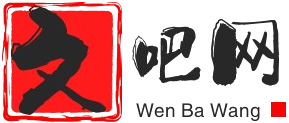【leg】的翻译、意思
时间: 2025-01-25 23:36:01
【leg】怎么读
美:[lɛɡ]
英:[leg]
【leg】是什么意思、字义解释
1. n. 腿;支柱
【leg】的详细解释
英文单词学*与分析:[leg]
1. 基本定义
- 字面意思:
- "Leg" 的字面含义是指人或动物的腿,是一种用来行走、跑步、跳跃等的肢体部分。
- 词性:
- 名词(noun)
2. 词源与起源
-
词源分析:
- “Leg” 源自古英语单词 "lēh", 意思是肢体或腿。它与德语的 "Bein" 和拉丁语的 "crus" 有某种联系,表明其在日耳曼语言中的根源。
-
历史背景:
- “Leg” 一词在古英语中首次出现的时间大约在公元前8世纪左右,相关文献中可以找到该词的早期使用。
-
课本:
- 在*的英语教材中,这个词通常出现在初中和高中阶段,主要用于身体部位的词汇学。
- 在牛津和美国的教材中,通常在初学英语的阶段(如小学阶段)就会出现,尤其是在介绍家庭和身体部位时。
3. 使用场景
-
正式与非正式语境:
- 在正式语境中,"leg" 可以用于医学、法律等领域,例如:“The patient has a fracture in his leg.”(病人的腿有骨折。)
- 在非正式语境中,"leg" 可以用在日常对话中,例如:“I ran so much today, my legs are sore!”(我今天跑了很多,我的腿很酸!)
-
特殊场合:
- 在法律领域,“leg”可以指代法律的一部分,例如“legislation”中的“leg”。
- 在科学中,"leg" 可能用于描述生物体的特定结构,如“arthropod legs”指节肢动物的腿。
4. 示例句子
- The athlete injured his leg during the competition.
- **员在比赛中伤到了他的腿。
- She has long legs that help her run fast.
- 她有修长的腿,这帮助她跑得快。
- The table has three legs, making it unstable.
- 这张桌子有三条腿,使得它不太稳。
- In some cultures, crossing your legs can be seen as disrespectful.
- 在某些文化中,交叉腿被视为不尊重。
- The politician's leg was broken in a car accident.
- 那位政治家的腿在车祸中骨折了。 *. The spider has eight legs.
- 蜘蛛有八条腿。
- He stood on one leg while trying to balance.
- 他试图保持平衡时站在一条腿上。
- She wore a beautiful dress that accentuated her legs.
- 她穿了一条美丽的裙子,突显了她的腿。
- My legs felt tired after the long hike.
- 长途徒步后我的腿感到疲惫。
- The leg of the chair is broken and needs repair.
- 椅子的腿坏了,需要修理。
5. 同义词与反义词
-
同义词:
- “Limb”:指四肢的总称,包含手和腿,强调身体部位的整体。
- “Appendage”:一般指附加的肢体部分,使用上更为广泛。
-
反义词:
- “Arm”:指手臂,与腿相对,强调身体的不同部位。
- “Head”:指头部,表示身体的另一个重要部分,与腿有明显区别。
. 学方法
-
音标记忆法:
- "Leg" /lɛɡ/ 可以通过音节的发音来记忆,想象一个人用腿“走”(leg)来帮助记忆。
-
词根记忆法:
- 可以将“leg”与“legislation”联系起来,理解“leg”作为法律的支柱。
7. 关联词汇
- leg injury(腿部受伤)
- leg muscle(腿部肌肉)
- leg room(腿部空间)
- leg press(腿部推举)
- leg brace(腿部支架)
通过以上分析,可以帮助学*者更全面地理解“leg”这个词的含义和用法。
【leg】例句
1、[N-COUNT] A person or animal's legs are the long parts of their body that they use to stand on. 腿
例:He was tapping his walking stick against his leg.他用拐杖轻轻敲打着他的腿。
2、[N-COUNT] The legs of a pair of trousers are the parts that cover your legs. 裤腿
例:He moved on through wet grass that soaked the legs of his trousers.他继续走在湿漉漉的草地上,弄湿了他的裤腿。
3、[N-COUNT] A leg of lamb, pork, chicken, or other meat is a piece of meat that consists of the animal's or bird's leg, especially the thigh. (羊、猪、鸡等的) 腿肉
例:...a chicken leg.…一只鸡腿。
4、[N-COUNT] The legs of a table, chair, or other piece of furniture are the parts that rest on the floor and support the furniture's weight. (桌子、椅子等家具的) 腿
例:His ankles were tied to the legs of the chair.他的脚踝被绑在了椅腿上。
5、[N-COUNT] A leg of a long journey is one part of it, usually between two points where you stop. 一段旅程
例:The first leg of the journey was by boat to Lake Naivasha in Kenya.第一段旅程是坐船到肯尼亚的奈瓦夏湖。
6、[[非正式]] If you are pulling someone's leg, you are teasing them by telling them something shocking or worrying as a joke. 开某人的玩笑
例:Of course I won't tell them; I was only pulling your leg.我当然不会告诉他们;我只是和你开玩笑的。
